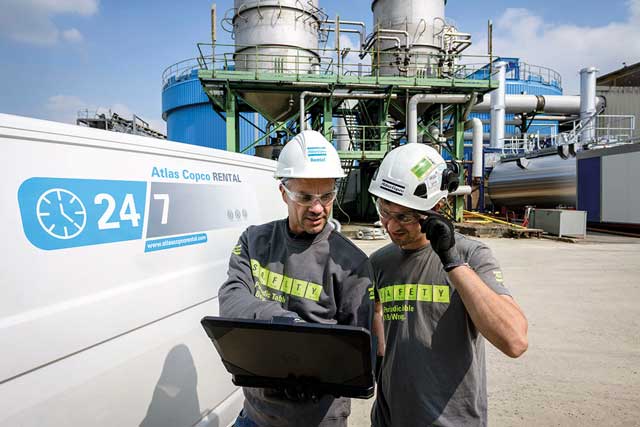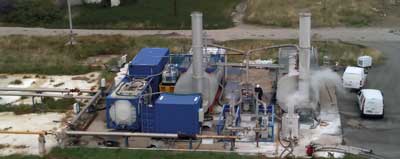
If your steam boiler breaks down, you might need to turn to an emergency rental to keep production going. But do the groundwork first, says Matthew Schofield, Atlas Copco UK steam rental project manager.
As an engineering/maintenance manager, what is your approach to dealing with an emergency breakdown?
Do you wait until it happens and then address the issue? Or plan for the worst and know that a solution is ready for implementation? This article will help explain why it is best to plan for the worst-case scenario.
Let us briefly consider the steam boiler you have on site. When it was bought, there would have a been a period of scoping and specifying so that the solution was matched to site requirements, based on steam demand, working pressure, condensate recovery, fuel available and so on. The boiler manufacturer would then provide a package boiler solution tailored to your needs as the most efficient, cost-effective solution.
Ask yourself the following question. Is it reasonable to expect a rental provider to have an identical solution on the shelf, ready for emergency deployment? The answer is probably not.

A rental boiler provider may have a boiler of the same output (kg/hr) but what about the following factors: laydown area; working pressure; tie-in points/connections; pipe specification; gas pressure; fuel/oil supply; water supply; emissions to the atmosphere; logistics for delivery; and ancillary equipment needed?
Don’t forget compliance with BG08 and MCPD to ensure a safe and environmentally sound temporary installation. It is also likely that if you have a thorough Boilerhouse Technical Risk Assessment some of the items should have been addressed. Has this been communicated to your rental provider?
This is the type of question that a steam boiler rental provider may ask when trying to identify a solution suitable for your site, but without a site visit and answers to the points above a fully matched solution can never be achieved.
Contingency planning
A contingency plan will provide a fully scoped solution ready for deployment without the need for emergency visits, and therefore in the event of an unplanned need for rental will improve on speed, service and turnaround of the solution, minimising downtime and loss of production.
By its nature, a contingency may never be required. However, knowing that a solution and an inventory of equipment required to complete the installation have been identified, whether it is for a planned or unplanned event, gives peace of mind. Just one phone call and the process of preparing and dispatching the required assets can begin.
An Atlas Copco contingency plan reviews all the options available in our fleet. Individual assets from water softeners, hot wells, de-aerators, boilers, economisers, superheaters and blowdown vessels allow for a tailor-made solution for any boilerhouse outage, whatever the size.
Depending on the level of contingency cover required, a solution could come in the simplest form of an inventory with laydown and connections identified, to a fully bespoke 3D CAD solution suited for the more complex installations.
Whether you have had a rental boiler previously, are considering one for the future, or have no backup boiler in the event of failure then a contingency plan could be one less thing to worry about when you need that temporary steam.
A final thought. No matter what your approach is to emergency planning, there is one thing to keep in mind: compromise. A safe but compromised solution could mean the difference between a full or reduced output and no output at all.
matthew.schofield@atlascopco.com | www.atlascopco.com
0191 456 4990 or 07870 396744

